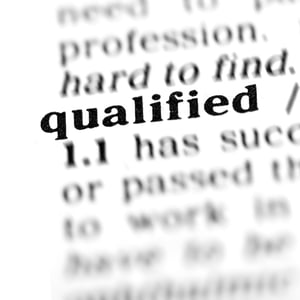If you're in the market for a new home in the Edmonton area, most likely you won't have all of the upfront money ready to make the purchase, especially if you're a first-time home buyer. This means you'll need to keep yourself within a budget, save for a down paymentdown payment, and know what you can afford for monthly mortgage payments.
You'll have a better idea of the price point you can work with for a home if you first obtain a pre-qualification or pre-approval letter from your bank or lender. Both of these are helpful when it comes to the home buying process, but there are some distinct differences between the two.
Pre-Qualification: A Good Place to Start
When you're ready to look at homes, you’ll definitely want to have a handle on your price range. When you get pre-qualified by a mortgage lender they will take a look at some general financial information, such as your income, debts, assets and liabilities. They can then give you a general idea of how much of a mortgage you would be pre-approved for.
It doesn’t cost you anything to get pre-qualified. A pre-qualification simply gives you an estimate, not a promise, about what you may be able to afford in a home. You also won't need to go through any kind of credit check or verify financial information. It’s not necessary to show bank statements or obtain documents such as letters verifying employment. It’s a quick and straightforward process in which you provide the relevant information verbally and you find out an approximate amount you can borrow.
Don’t Try To Impress With a Pre-Qualification Letter
Having a pre-qualification letter may reassure you regarding what you can afford, but chances are a homebuilder or seller will not accept this as any kind of serious document. While it’s a step in the right direction, you need to be able to show them that a bank will lend you a specific amount in order to be considered as a serious potential buyer.
 Pre-Approval: Let Your Letter Do the Talking
Pre-Approval: Let Your Letter Do the Talking
When you go through the process of providing all of the required documents, verifying your identity, and completing credit checks, then the financial institution can give you a specific amount they are willing to lend you. You'll receive a pre-approval letter stating the amount you can borrow.
To begin the pre-approval process, you'll need to complete and sign a mortgage application document, and in some cases, pay an application fee. Lenders will typically require the following documents as well:
- Photo ID, such as driver’s license or passport
- A confirmation of employment letter confirming your salary
- Proof of sources of other income
- Bank statements to verify assets
- Proof of funds necessary to pay closing costs and other fees
The lender will also check your credit score. In some cases, they may require additional documents to further understand your debts and credit history.
After documents have been received and your credit report has been reviewed, the lender will typically write up a conditional mortgage commitment letter. This letter will include the amount you have been pre-approved for and any conditions.
When you have been pre-approved and have the letter to prove it, you can make an offer on a home. As long as there are no changes to your finances or employment, your pre-approval will be valid for a set amount of time. This will be indicated on your pre-approval letter and is typically between 60-120 days.
Both Are Important...
Both pre-qualification and pre-approval letters are important pieces in the process of purchasing a home. A great first step is to find out where you stand financially, and getting pre-qualified is a great way to do this. This will also let you know if there are any aspects of your finances you need to work out before getting pre-approved. Once you're pre-approved, the fun can really begin. It’s time to start looking for your new home!




